Sigma DP Merrill Comparison & Review
by Ben Evans
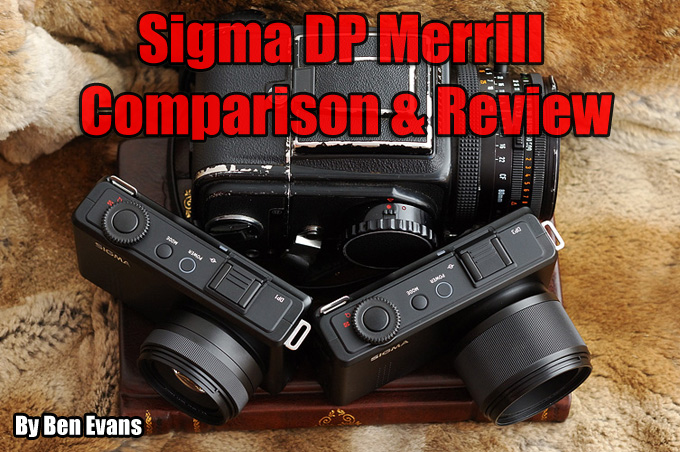
Which DP Merrill camera is best?
After much deliberation, I decided to get both the Sigma DP1 Merrill and DP3 Merrill. They make a great combination.
The DP1m is a great walk-about camera if you’re prepared to compromise in order to get amazing image quality.
The DP3m offers medium-format beating photos for stationary subjects if you fuss about stitching images together.
Otherwise, get the Sigma DP2m as a compromise, or decide whether a wide-angle or short telephoto lens fits you best. The battery life on all the cameras is abysmal so you’ll need lots of spares.
You can download this full-resolution photograph and print it for your personal use to see what the fuss is about:
Wide-angle lens DP1m
+ Capture the whole scene without having to stitch images
+ Much easier to frame images and wider depth of field
– A little more distortion and slightly softer corners
– Limited to 14.8 megapixels for most scenes
Standard lens DP2m
+ The ‘Goldilocks’ best of both worlds – not too wide nor too telephoto
+ Matches the perspective of our eyes so ‘seeing’ is more intuitive
– The perspective can be a bit boring so it’s tricky to take interesting photos
– f2.8 is a slow aperture for a standard lens
Short telephoto lens DP3m
+ Can stitch multiple image mosaics to achieve medium-format beating quality
+ Effectively no distortion and incredible sharpness. Perfect for portraits
– A big too telephoto for most applications
– Camera shake more likely with the longer, unstabilised lens
The Sigma DP Merrill Series Camera Review and Comparison
Change a little, change a lot and so while the DP Merrill cameras are practically triplets bar their different focal length fixed lenses, they’re altogether different to shoot with.
All of these cameras share the X3 Foveon APSc sized sensor which Sigma first featured in their over-priced SD1 dSLR. They’d initially gone after the medium format market; and now this same sensor has had three compact bodies built around it.
They have boasting rights to 46 megapixels, but you’ll only get 14.85 megapixels to print. Red, green and blue are captured at three different layers, similar to film and unlike the Bayer sensors you’re probably used to.
In practice, this novel sensor gives incredible acutance (everything looks very clear when you zoom in) which gives a feeling of realism; a world away from the cartoonish airbrushed look many cameras have.
Sigma DP3 M
The colours look great too; more natural. They don’t have the hyper-real, overly saturated look. Rich colours look rich; and subdued colours look subdued. Skin tones look amazing, especially in ‘Neutral’ mode.
The design also means that the low-light capabilities aren’t competitive and you’ll be limited to ISO 200 for quality results. Higher ISO sensitivities lose detail and saturation; this is no Nikon D4 nor Fujifilm X-Pro1.
Sigma DP3 Night Photography Bokeh
The bottom line is that while not full-frame, the Foveon sensor competes with everything up to medium format digital at ISO 100, especially if you fuss about and stitch multiple images together to increase the overall resolution. I’ve not seen any moire.
But, as Leica would claim after the disappointment of their M9’s DXOMark test, a sensor isn’t much without great lenses. Fortunately, the DP Merrill cameras are well provided for, and each lens is a true gem.
Moreover, they’re prime lenses matched to the camera they’re fixed to, allowing for phenomenal quality. If you associate Sigma lenses as being a cheap option, you’ll be pleasantly surprised. Even though they’re tiny, there aren’t many lenses ever made that can match them.
Sigma DP1 for Sreet
Part of the reason that they’re able to be so small is that each lens has a maximum aperture of f2.8, which isn’t particularly fast nor competitive. They are sharp wide-open at f2.8 however, which helps. Each lens has a minimum aperture of f16.
The lenses have a tendency to introduce green and pink flare when the sun is included in the frame. Sure, this might allow for some serendipity in ‘Art’, but actually you’re better off to use a lens hood to mitigate this, at least a little.
So you have three options to choose from. A wide-angle, a standard lens and a short telephoto. Forget the model numbers or the release date; the latest DP3m is no better than the DP1m, it’s just different.
The Sigma DP1m has a 19mm lens, equivalent to a wide-angle ~28mm on full frame because of the 1.5x crop factor. The Sigma DP2m has a 30mm lens, which is equivalent to a standard 45mm. The Sigma DP3m has a 50mm lens, equivalent to a 75mm short telephoto lens.
None of the lenses are optically stabilised nor is image stabilisation available in-camera. You’ll have to be a lot more steady at shutter speeds below 1/80s with these cameras than with the Olympus OM-D, for example.
This fits the trend of poor performance in low light. Image quality up to ISO200 is breathtaking. Detail and saturation diminish quickly after ISO400 as noise increases. Noise is a little more ‘film-like’ than Bayer sensor cameras if you convert the photos to black and white; but it’s still very digital and not attractive.
I recommend using a tripod with the DP Merrill cameras to get the most out of them. ISO100, f8 and be there. There’s no remote release so you’ll need to use the self timer to avoid camera shake. There’s also no bulb mode, so shutter speeds are limited to thirty seconds. However, you’ll be able to use a much lighter carbon-fibre tripod because of the camera’s size; this makes a big practical difference as you’re more likely to use it.
DP Merrill Camera Features
The DP Merrill cameras all have fixed prime lenses, so they can’t zoom.
E.g. Leica M series, Fuji X-E1/X-Pro1, Sony’s NEX series, all dSLRs.
+ Access a wider range of different focal lengths with the same camera
+ A broken lens doesn’t mean a broken camera
– Dust ingress requires cleaning the sensor
– Bigger lenses
E.g. DP Merrill series, Sony’s RX1, Pentax MX1
+ Matched to the sensor for better image quality
+ Never have to clean the sensor
– Restricted by the focal length of the lens
– If the lens gets scratched, it can’t be easily replaced[/fancy_box]
It was restrictive to use only one focal length and not have the option to change lenses. That said, photographers have managed to create amazing photographs with these limitations. A lot of Leica M users stick to a favourite prime lens (35mm or 50mm perhaps) and use nothing else. I used the wide-angle DP1m and short telephoto DP3m together; they make a great combination at a still-reasonable price.
Other than the lenses, which features are worth mentioning? There’s some good news, some bad news and some you-decide news.
The good news is that the cameras use a leaf shutter. This means that taking the pictures is effectively silent; invaluable for many genres of photography. It also allows you to synchronize a flash at higher speeds. The Sigma DP Merrill cameras sync at 1/1250s at f2.8, 1/1600s at f4 and a rapid 1/2000s at f5.6! In practice, this means that you can easily darken the ambient light, use larger apertures and less flash power. Most pro dSLR cameras have a maximum sync speed of 1/250s.
Sigma DP3 with Flash
The bad news is that the battery life is terrible. I’ve managed 125 Raw+Jpeg photos with one battery, but that’s exceptional. Sigma provides a spare, but you’ll need to get lots of batteries. Thankfully, they’re cheap and small. A power adaptor exists for studio use; so one would hope that some enterprising chap will create an external battery pack.
The you-decide news is how the camera looks and feels. It’s been built around the sensor and that shows. It looks like a compact digital camera from a decade ago; boxy and basic. I found myself explaining to clients, unasked, about the amazing image quality. If a camera is a fashion accessory, go with a Leica. If you want to look ‘pro’, get a Nikon D4 or Canon 1Dx. Otherwise, it’s a ‘secret’ weapon, able to get amazing quality photographs in a camera that looks amateur; this is huge for documentary photographers, for example.
The body is small and light, especially considering the APSc sensor. The DP3m’s lens is slightly larger so it’s less pocketable than the other two. All three DP Merrill cameras are made from aluminium – which weighs more than magnesium alloy, and is more liable to dent. The camera feels solid like it would survive a tumble; but it’s not weather-sealed so you’ll need to protect it in heavy storms.
The menus are essentially identical on all of the cameras. They’re well set up for photographers. I particularly liked the two ‘quick’ menus, which gave customizable access to the controls I’d need when photographing. The exposure modes are changed via a button on the top of the camera.
In Manual Exposure mode, you can set the top wheel to adjust either the shutter speed or aperture. This was very handy; I set it to change aperture when I was shooting with studio flashes, and shutter speed otherwise. Otherwise, the variables are controlled via the back buttons; which was okay but I’d prefer two wheels. The wheel on top feels precise but fluid and can be controlled with a finger or thumb.
In Aperture Mode the wheel controls the aperture or the exposure compensation. This allows you to set the aperture to the sharpest aperture for the lens (which differs between cameras but f6.3 will be great) then use the wheel to adjust exposure compensation. This is very quick in practice. The over/under-exposure is shown numerically, which I liked.
Metering is very good with a slight tendency to underexpose to preserve highlights. However, shadows lose a bit of saturation while highlights are well recoverable so you might want to over-expose by 0.3-0.7EV.
Wisely, Sigma saw fit to include full RGB histograms. These are all but essential for accurate exposure, especially with Jpegs (RAW files have a bit of latitude). This is just as well as judging exposure by screen brightness was hit or miss. ISO200 seems to have a bit more dynamic range.
You’ll also be doing all of your composition using the screen, which is three inches diagonally across and has almost a million pixels. It’s hard to see in very bright conditions and the picture gets desaturated and grainy when light levels are low. It also attracts smudgy fingerprints. It doesn’t tilt, which would be nice, but understandable given the camera’s size.
I didn’t particularly enjoy composing the image using the screen. It was easy to forget how shallow the depth of field can be at f2.8 on the Sigma DP3m’s 50mm lens and miss photographs. But this is for moving subjects. When I could use the manual focus with the ‘loupe’ at 12x magnification (variable), I enjoyed the precision.
The auto-focus, especially after the firmware update, was pretty snappy. However, coming from a pro dSLR it felt slow and liable to hunt in low light. Fans of the focus-and-recompose method will be pleased that the size of the focus points can be varied. I found pre-focussing all but essential for moving subjects.
The alternative is to use an after-market optical viewfinder mounted on the hotshoe. I’d be happy enough using the DP1 Merrill like this because of it’s wide-angle lens, and possibly the DP2m too. This also allows you to save battery life by not using the screen.
Composing with the screen also requires that you hold the camera in front of you like an Instagrammer. You’ll get more camera shake because you can’t brace the camera against your face and still frame accurately. Best to use a tripod or a monopod then.
There is a shutter delay on these cameras. It’s not enough to notice normally, but I did miss several shots because of it, even with manual focus/ manual exposure. This is a pain, as otherwise I’d whole-heartedly recommend the DP1m in particular as a street camera. As it is, you’ve got to anticipate by a split-second.
It’s been said that the Sigma DP Merrill cameras are slow. Those who use them will know that while it takes a while to write the large RAW photos to the card, they can manage 4 frames-per-second for 7 shots. This was normally more than enough to get the majority of photographs. Cartier-Bresson was the master of one shot to capture the ‘decisive moment’ – I like the motor-drive’s facility to get a quick shot after the first as a backup and in case the subject blinked. Writing the files to the card is quite slow however.
But then this is an unobtrusive camera, and for actual photography, that makes up for a lot. I could conceal any of the DP Merrill series in my hands, and that silent leaf shutter let me get close and not concern subjects. People were far less intimidated by these cameras than with the Pentax 645D, for example. Officious security guards also took less notice, and I imagine customs would be the same.
The importance of size and weight is often overlooked by those people looking at statistics and pixels. But it makes a difference; I’d be much more likely to carry this camera wherever I go, which I couldn’t say about a pro dSLR. You’ll get better photographs simply because the camera is with you when you see them.
The feature-set is pretty pared down. They’re obviously focussed on photographers, and photographers who know what they’re doing. A movie mode is available, but only at 480p resolution; one of the lowest out there. An interval timer does allow for timelapse photography however.
Here’s a 480p sample video from the Sigma DP1m with the X3 Foveon sensor, straight out of camera
Because of the innovative sensor, you’ll have to convert the RAW photographs in Sigma Photo Pro. It is anything but ‘pro’; buggy, slow and limited. Best to export the images as a ProPhoto or Adobe RGB profiled 16bit .TIFF file and work on them in another software. The Jpeg files are very usable straight from the camera if you set it up right, however.
So the features shared by the three cameras are similar (and similarly scarce). But I’ve said that they’re three very different cameras, and it’s true. The Sigma DP1m feels like a great travel camera. Its wide-angle lens allows you to capture a range of subjects, from travel photography in Barcelona through to landscapes. However, using a wide-angle lens for portraits is inadvisable and you’re effectively limited to 14.8 megapixels.
I’d consider the DP1m as a great everyday camera. It’s light enough to forget about when you’re carrying it, but the results are superb. Importantly, it’s a very small 28mm full-frame equivalent combination. It’s the sort of camera you can have for years and just mess about with, knowing that the results will make beautiful prints up to about A3.
The DP3 Merrill is a different beast however. Its longer 50mm (75mm equivalent) lens will probably be too long for everyday photography for the majority of people. However, it’s creates beautiful portraits, especially head-shots, and makes a great dedicated machine for that; and one that won’t intimidate subjects.
Sigma DP2M
Sigma DP2M
The DP3m is also designated as a macro camera, and while it doesn’t get as close as a true 1:1 ratio, the 1.5x crop on the sensor does get you very close so this could also be a great-value workhorse for product or food photography.
Be that as it may, the true strength of the DP3 Merrill is its ability to fit more images into a stitched panorama/mosaic. The 100% per-pixel acutance of the X3 Foveon sensor, in my opinion, beats pretty much all of the competition outside of medium-format digital. I also prefer the colour. However, for huge prints the D800e will beat it for dynamic range and by sheer force; double the megapixels.
But if you fuss about creating multiple exposure-bracketed HDR images to stitch together later, you can effectively create a medium format digital camera for a fraction of the price. Can you do this with other cameras? Sure, but the sharpness of the lens and excellence of the sensor gives the Sigma DP3m a huge advantage.
Sigma DP3
So effectively what you have, if you want to take the time and endure the hassle of taking and combining the images, is one of the best cameras on the market today for big prints of stationary scenes, bar none. You can capture a scene with multiples of the 14.8 megapixels to create huge files which will give splendid, enormous prints.
But realize what you’re getting. The Sigma DP3 Merrill pushes image quality forward by a couple of years. Doubtless in a decade the towering prints possible from multiple-stitched DP3m files will be achievable by your phone. If you want this image quality now without paying tens of thousands or carrying a huge, heavy body, then the Sigma DP3m, with all of its compromises, is your best option.
The DP1m will always give you amazing prints in any of the sizes you’re likely to need; books and magazines. But then so will a lot of cameras available today. Sure, the image quality won’t be quite the same unless you spend a lot more, but you’ll get far better high ISO performance and usability from a different camera. But then I like the way the DP1m handles, and especially how discreet it is.
And the Sigma DP2 Merrill? Well it’s something of a ‘Goldilocks’ camera. The lens isn’t too wide, nor is too telephoto; but then often it’s not wide nor long enough. It allows you to stitch a few images together for bigger files but not as many as the DP3m. However, doing so will give you a wider angle of view with less photos. It’s a nice compromise, and as the 30mm (45mm) lens is roughly equivalent to our own field of view, it’s very natural to carry around and shoot with.
Personally, I’m going to get one of the DP Merrill cameras. Which one? I wasn’t sure, hence this review and comparison. I’d not like to use any as my only camera; they’re not fast enough for action nor are the lenses long enough for a lot of work I do. However, their size, great value and amazing image quality makes them an obvious choice as a second camera.
Sigma DP3
I think the best decision would be both the Sigma DP1m and the DP3m. The DP1m as a carry-everywhere camera with incredible images, and the DP3m as a short telephoto companion, and occasional multiple-image champion when I need the best quality. If I couldn’t get both, I’d recommend the Sigma DP2m as a compromise, or choosing which of the DP1m and DP3m suits you best; have a look at your favourite photographs to check the focal length to be sure.
One thing’s for sure; they’re niche cameras. Most photographers won’t have the skill to get the most out of them but when you get them in the right zone, they are tremendous. I use them like a more convenient Hasselblad 500cm for meditative photography or like a quieter, cheaper Leica M for covert photography. However, you choose to use yours, enjoy the image quality and invest in plenty of batteries!
Keep updated about the Sigma DP Merrill series and share your photographers here; https://www.Facebook.com/sigmamerrill
For more samples, check out this DP3 hands-on look; http://www.EnglishPhotographer.com/sigma-dp3-merrill-sample-photos/
Enormous thanks to Jaume, Rui and Sandra at Sigma Photo ES for the loan of these three DP Merrill Cameras.

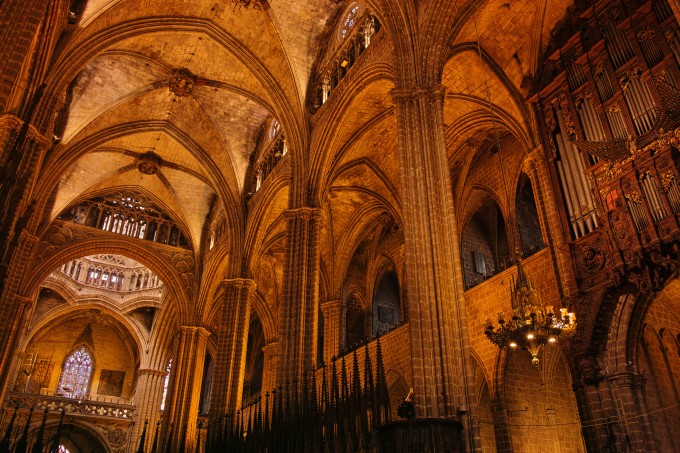
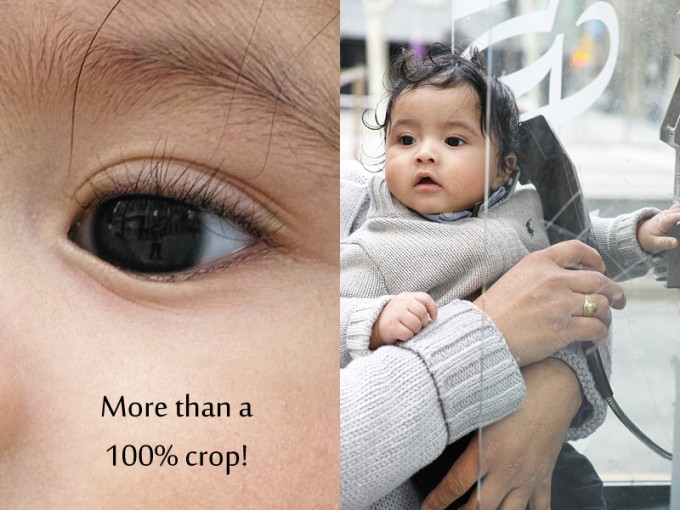
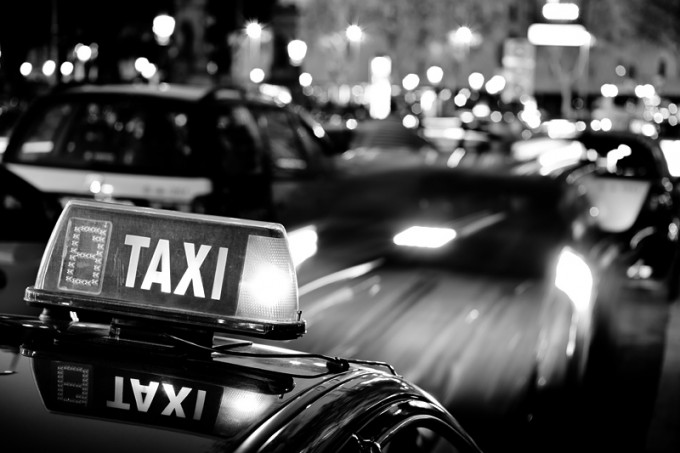
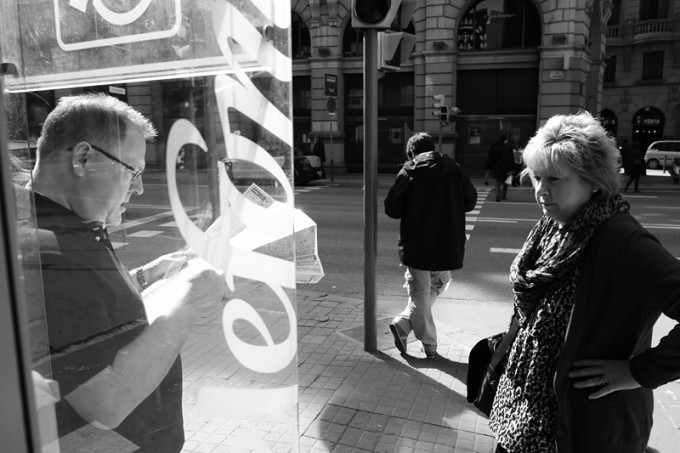
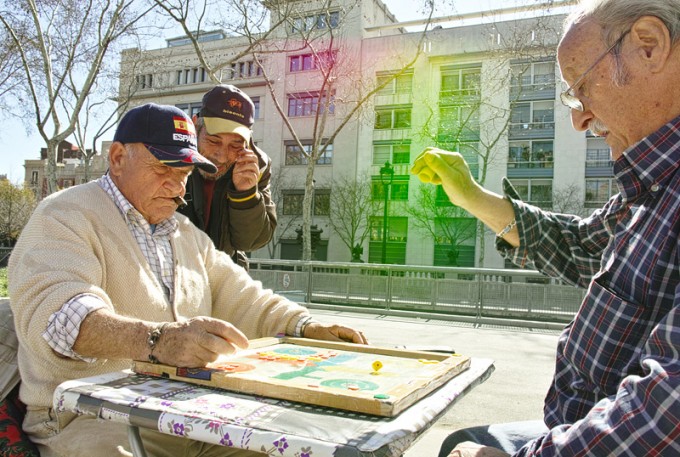
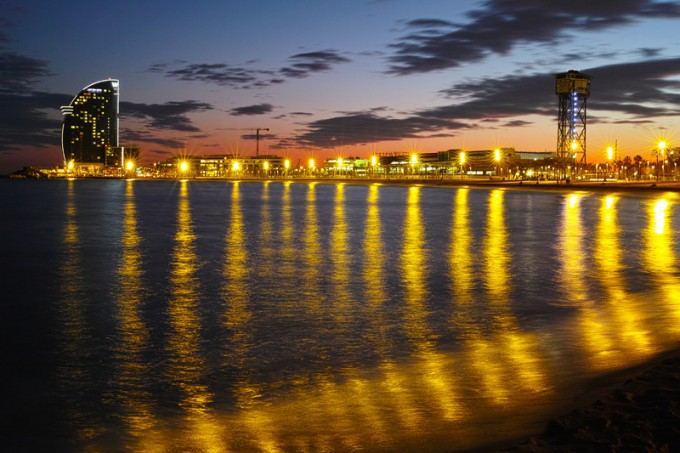

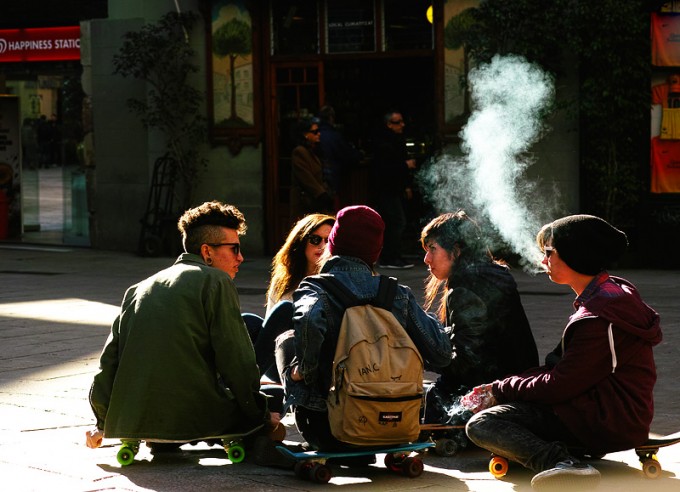
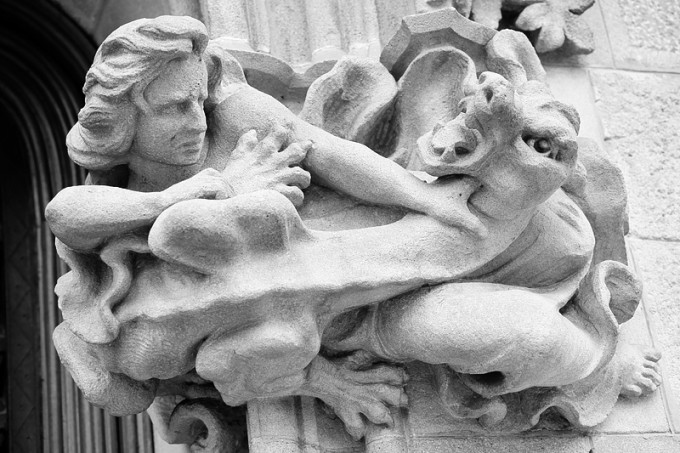
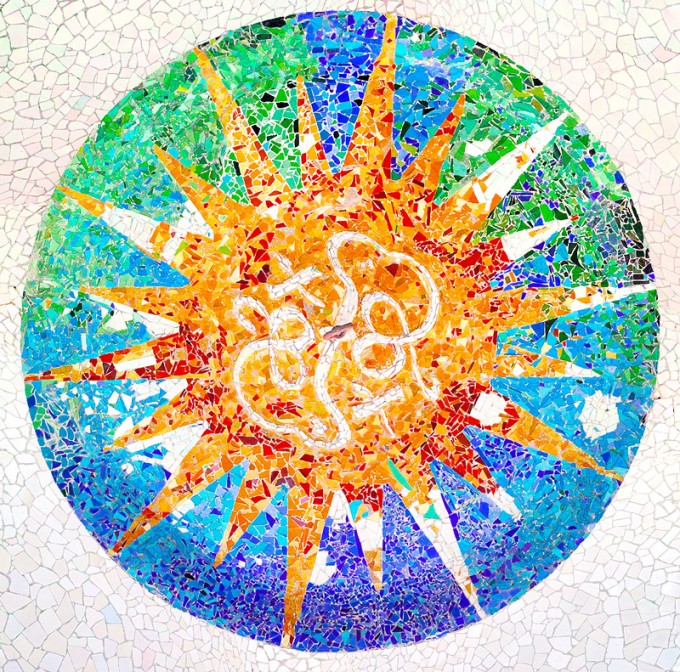
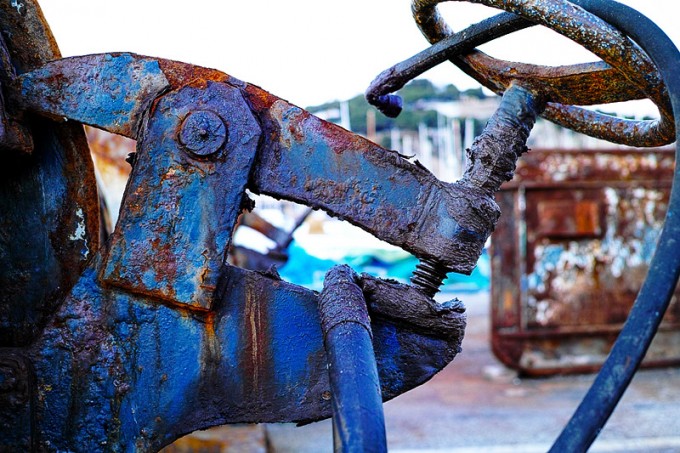
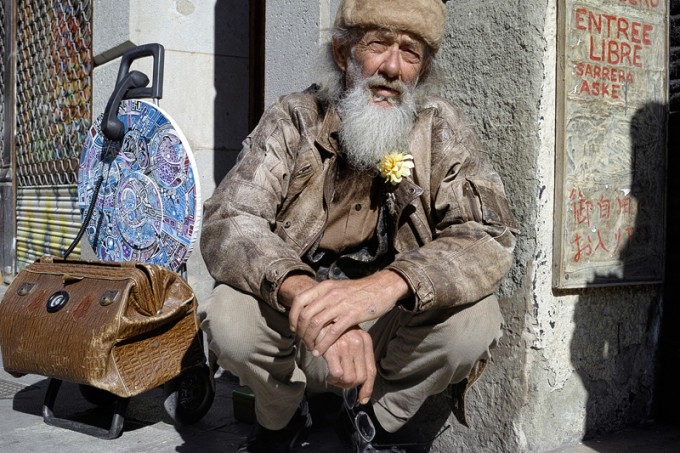
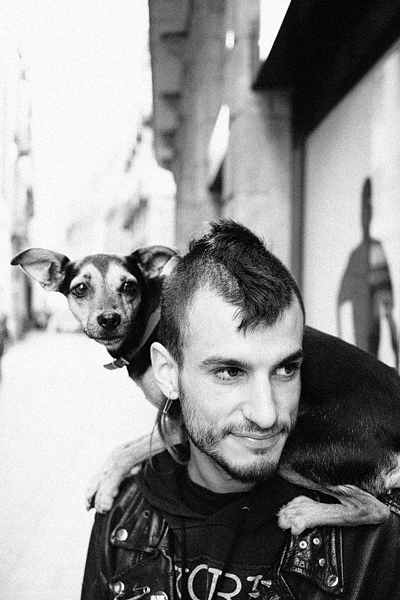
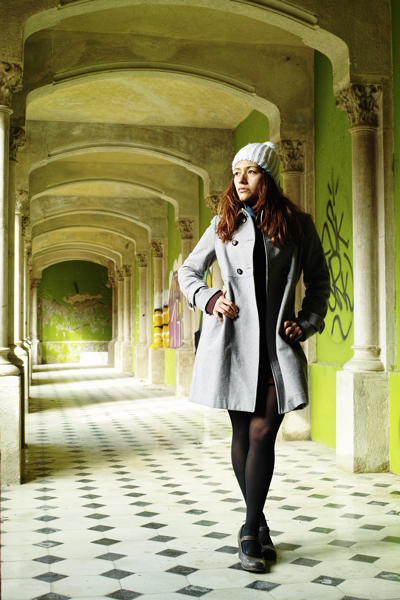
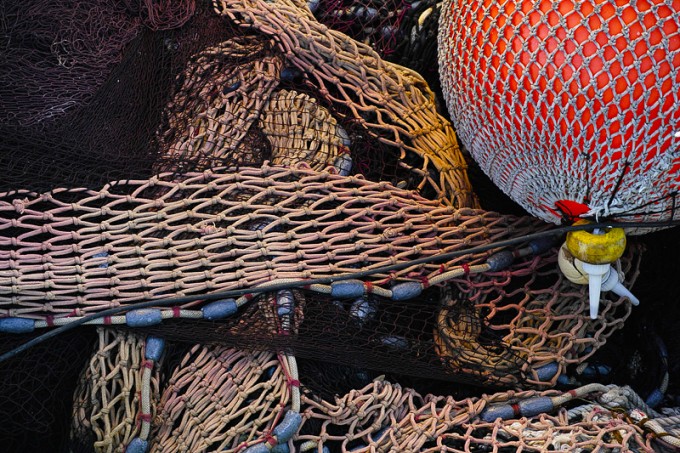
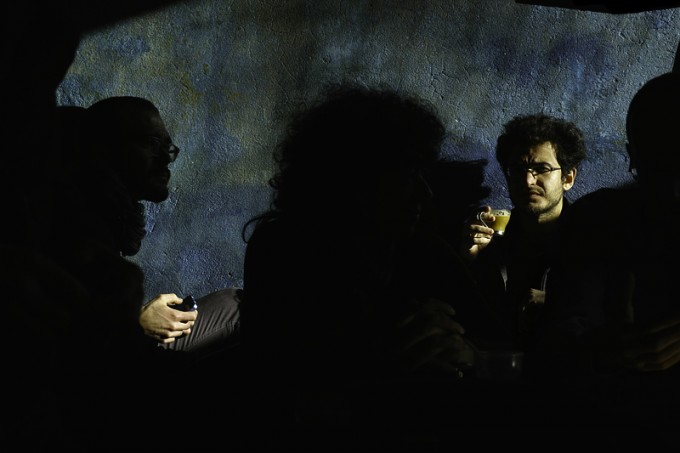

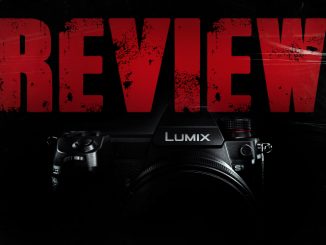
I never thought images could be so sharp as to be ugly.
See also Hoodman FInder Kit and Kleptography custom grip.
Great review!
Nice to see you talking about what they’re like to use and where they do well rather than listing numbers and technical details.
I’ve had the camera for a while, but you gave me a few things to consider next time I take it out. I had never noticed the sun effect before, thinking about it that’s probably because I prefer it on this camera while with some other lenses it still stands out but isn’t as artistic, either way I will have a play with the sun and lighting next time I use it.
Hello, fellow DP-Merrill enthusiasts and worriers. This is my first time joing a blog of this sort, so I hope you will bear with me as I learn the hows and rules. First off, let me say I have used the DP1 & DP2 for a year now, and the DP3 since it came out ealrier this year. Before that, I was strictly a Canon DSLR shooter for decades with a brief fling with the Linhof Technorama 25 years ago. I wrote a diary of sorts about my experience with the Merrills back in March and offer a link to it here since it comments on the business of holding the camera still without a tripod, something I can’t quite get my mind around these days. That’s it for now. I have some questions about Sigma Photo Pro later since apparently I am not using it to its full advantage.
These are great cameras for short-trip hiking landscape photography (or long trip, if you use viewfinders and bring a solar charger or ridiculous numbers of batteries). All that said, on certain trips into slot canyons, an SLR with interchangeable lenses including an ultra-wide-angle lens is a better choice. Does anyone here use graduated neutral density filters or ND 10-stop filters?
Love this review and movie. The Sigma DP*M has one problem, I do not seem to like my FF Canon’s with L glass that much as I used to :). The “old” Sigma DP* where very nice, but the Merrill’s are simply amazing. I already had the Sigma DP2M and this week I got the Sigma DP3M. Love them to pieces. I still own the (really) little Sigma DP1x and I do think that is enough for me. I am often on my path with the three camera’s in a little bag. With some spare battery’s ofcourse.
Ha, just found your written review by accident. A few days ago I watched your video on utube. Video or blog, no matter, you did a great job in reviewing these special cams! I’m already using the DPs myself, but still looking around to read what other people can do with em. =)
I used to own a DP2, which I loved and hated at the same time. Dead slow, but those images! I loved the colours from that Foveon sensor, especially skin tones. Slightly more modest colours, kind of M9 like. Seeing this review makes me want the DP3 for studio portraits. Unlimited sync speed and a relatively fast 50mm, and again: those images! It’s almost a poor man’s Phase One.
I have a DP1 M and use the studio power adapter SAC-5 (one part of it,the bit that replaces the battery) connected to a ANKER battery pack with capacity 10000mAh 3.7v 37Wh (DC 5V/3A max output) – this enable me to shoot outdoors all day long on one charge 🙂
Awesome images
The dp series takes digital captures to a higher level barring already said limitations. My favorite is the dp2m. For examples, including use of the ef-610 flash or monochrome processing through Sigma Photo Pro 5.5 see:
https://www.facebook.com/hawaiiankava?ref=tn_tnmn#!/media/set/?set=a.10150491707188486.391049.817533485&type=3
For the real mccoy, though, I much enjoy film photography and the handling of the mechanical Leicas. It’ll be ground-breaking and sheer joy when/if foveon or film-like sensors come to Leica.
Fantastic Image quality (or is it just fantastic images?). After owning a SD14 for about 18 months I know how good the sensor can be (at low ISOs). The question is where is the 35mm equivalent? Fuji settled on this as a classic focal length and as a owner of an x100 I can say it is a very versatile range.
Great review Ben. I only wish I had the patience…
Should be some interesting news in the coming weeks with the NEX7N, a couple of new Zeiss e-mounts, and the RX10 all forthcoming. YAY! 🙂
I tried DP2M for 3 days by using Sigma’s generous 3 day trial offer. I was awed by the quality of images it can produce, but only if..
-you can hold camera really steady. A tripod is an absolute must or keep the camera on a support and use the timer function, a big problem if you like to snap without planning and taking your time
-you carry extra batteries (not a problem)
In the end I decided it was not for me. I could not risk not getting important pictures that I wanted over getting a very few excellent ones.
I use all three cameras without a tripod, and even though a tripod would capture more detail, I was able to obtain sellable images at ISO 320-500 in drizzly weather on my visit to Antwerp two winters ago. Think about making use of the strap wrapped around your arm so that your camera isn’t just hanging out there at arm’s length. Also a loupe taped to the LCD allows you to press it right up against your face – sort of.
Besides Sigma’s Photo Pro another file processing software that works with their cameras is Iridient Developer 2. For $75 it’s a really nice piece of software code that doesn’t take up a lot of room on your computer. It not only works with Sigma files, but just about everyone else’s as well. It’s fast and intuitive. I’m using this and Sigma’s PP, but am finding that I’m going to this now more than ever since downloading it. I agree on the Sigma images. They are something that makes you stand up and take notice of these cameras IQ’s.
Good article! I have a DP1 and DP2 and find I use the DP2 most of the time…but I love that focal length!
Question for the Sigma users…what else do you need to do to the files that Photo Pro won’t do? I use PPro to process my files and yes it’s a bit slow, but I’ve found I don’t really need to do much processing of DP files anyway. A tweak to the exposure, and maybe a little X3 fill and maybe some sharpening, and that’s about it.
Photoshop, Lightroom and Aperture cannot read the raw files at present so you need to convert them in Sigma’s own programme to a 16 bit Tiff file and then work on the Tiff file as you deem necessary in whichever software you would normally use.
You can use the Tiff file as is in the same way that you would use a film transparency, but just like printing a transparency you have the opportunity to crop, fine tune and convert to B&W etc.
yeah, but there are things you can do in Photo Pro that you can’t do in LR or Aperture like X3 fill light, and the better monochrome mode. I think the only thing it won’t do in your list is cropping. It’s not the best performing app, but the results are pretty spectacular, and like most of my film shots, I don’t find I need to tweak my DP files very much.
Very good article, but the sample images are very small. Thank you
Very very nice article.
what an awesome post, well done.
The images out of these cameras look fantastic. But having to work with Sigma’s software, the poor low-light performance and some of the other issues such as colour casts make them very niche IMO. Still I really want to give one a go. As a portable landscape camera they seem amazing.
Excellent results from the camera but I just don’t understand the point of putting the same body fixed on three different lenses. Why didn’t they just make it an interchangeable lens system based around one body instead? Owning all three would run you $2600 whereas my NEX 6 with the Sigma 19mm, 30mm and Sony SEL50mm only set me back $1350. Not quite apples to apples comparison but the NEX sensor is quite capable.
I think you underestimate the pleasure of not having to deal with changing lenses in the field. I often walkabout with two or three of these cameras strapped about my neck and shoulders. No problem. Think of it this way: Here you have three unbeatable lenses for less than $1000 each with free cameras attached to them.
It’s really about the photographer, yes? You could probably give this guy an oatmeal box with a pinhole in one end and the images would be wonderful. That said, it’s nice to hear from someone who can figure out their shooting style and how a particular camera will fit said shooting style.
Great images – clear and detailed explanations – I feel like I have an new understanding of this subject matter.
Thank you Ben – thank you Steve…
Superb article Ben! I still really want one (but which one) but just can’t ever quite commit due to what I would want to use it for so just pre-ordered the Ricoh GR. But oh those rich files from the DPM’s at base ISO still find me drooling … sublime.
Difficult, weird and ugly, but capable of amazing results. I need to stay away from camera stores and the internet until the urge to order one has passed.
Ugly! I think you might be confusing this camera with the Quattro DPM.
Excellent review!
I am a happy owner of Sigma DP1 DP2 Merrill as well.
May I ask which flash do you use? How do you synchronize a flash at higher speeds?
Excellent article with great shots supporting your test and conclusion. Now the true answer to your question, “which DP Merrill camera is best?” has to be, “they all are, at there respective equivalent focal lengths”.
Wow! Your images look so rich and compelling. In your hands, these cameras really produce. Given a properly exposed shot, were you happy with jpegs?
Having just purchased the Sigma DP3 (replacing a nikonD300s and 17/70 lens but keeping my D600 and prime lensesI find I have turned full circle to my early days of a single prime lens and camera body (Nikon F no meter and 135 lens).
So as a comparison with the D600 which is full frame 24mp how does the DP3 do… Well under good conditions the image quality is better -it is amazing when viewed as a 30 inch wide image on 21.5 inch Imac screen…. But making images is much harder than with the Nikon, slower, more methodical and consider a tripod or flash working in manual mode.
Other drawbacks awful battery life especially when it is new to you… It comes with two batteries but 125 images is optimistic, probably work on just over half that and get some extra batteries. The image size means it uses SD cards quickly… The raw file is over 40mp while a converted Tiff is 80+ out of Sigma’s processing programme (I do nothing more than conzvert to Tiff there) then into Lightroom etc to work on it… So plenty of hard drive capacity is required!
But the camera is small, discreet and quiet, the images quality is amazing and I look at the DP3 and ask did this little camera really produce these images? The menus system is very straightforward, there are few controls and the quick view menu simple to use.
I now have the Voigtlander 75mm finder which means the screen can be switched off – providing you are photographing a flattish plane the focus confirmation works. I have used a generic rubber lenshood as the reversible Sigma one was not available when I bought the camera … just showing now with some dealers
in UK…. Would I buy another one with a different focal length, I’m not sure yet, … If my hand problems get worse then carrying and using the Nikon and 4 prime lenses could be daunting / even with the 50f1.4 it is very heavy compared with two Sigma DPs … Maybe the Sigma Dp1 with 28 lens but if they introduced a 50 f1.4 or even 1.2 ….
The Sigma DP Merrill cameras are gems. The image quality of the Sigma DP Merrill cameras is better then any 24mp APSC or full frame camera and it comes close to the D800. When you stich several Merrill images the quality is even more astounding. You can buy a lot of extra batteries for a few dollars. Batteries are small, lightweight and they charge fast. If you are worried about file size, just get 64GB, 256GB or 512GB SD cards and a 3TB harddisk. I don’t see the problem. If Sigma could ever produce a bigger Foveon sensor (full frame 24mp perhaps) with perfect matching lenses, I think it could a be serious alternative for medium format.